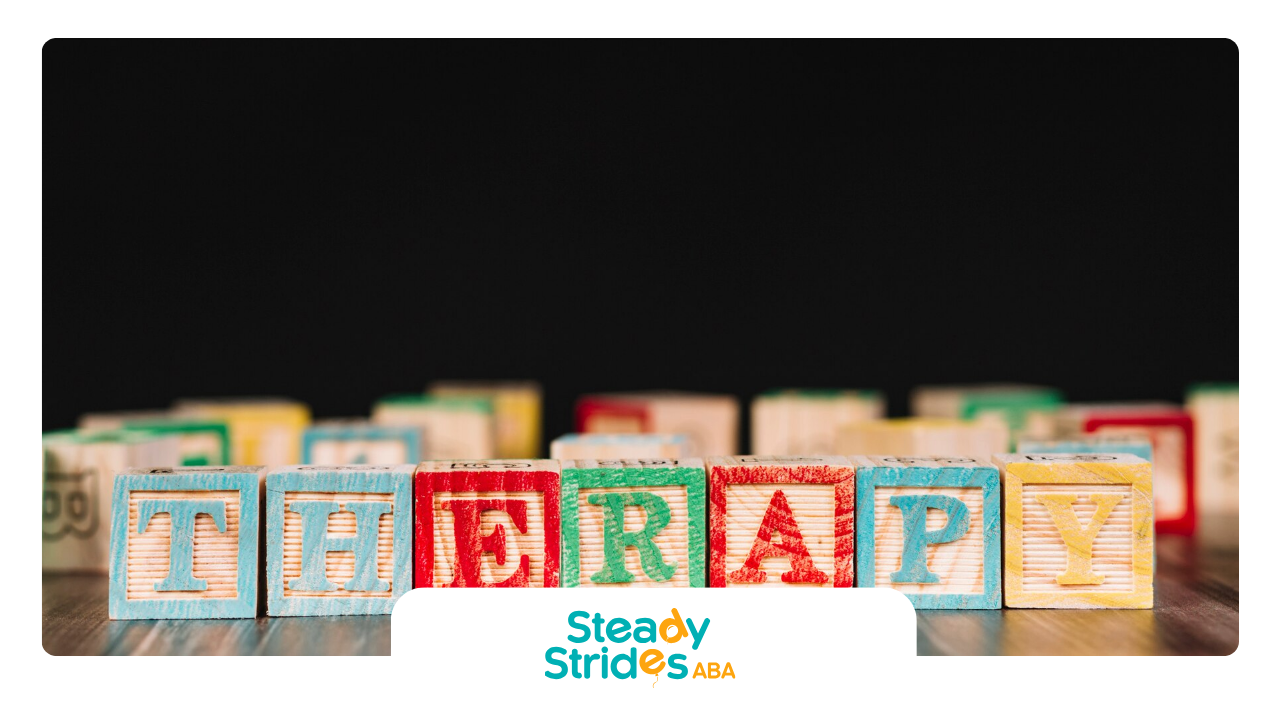The role of parents in ABA therapy is a topic of much discussion. Should parents stay in the room during sessions, or is it better to step out? Let's explore the pros and cons of parental involvement in ABA therapy and how it can impact your child's progress.
From understanding the therapist's techniques to reinforcing learned skills at home, parental participation can be invaluable. We'll delve into the benefits of parent involvement and offer guidance on how to make the most of your child's therapy sessions.
Parental Involvement in ABA Therapy
Do Parents Stay During ABA Therapy? It’s a question often asked by parents. Well, parents are encouraged to stay involved during ABA sessions.
Active involvement of parents in Applied Behavior Analysis (ABA) therapy is essential for the success of their child's treatment. This participation not only enhances the effectiveness of the therapy but also fosters a collaborative environment that benefits both the child and the family.
Importance of Parental Support
Parental support plays a crucial role in ABA therapy. It allows parents to understand their child's unique needs and challenges while reinforcing the skills learned during therapy sessions at home.
Research indicates that parent training can significantly enhance the effectiveness of ABA therapy, especially when therapy hours are limited. This training equips parents with the knowledge and skills needed to implement strategies effectively, thus promoting the generalization of learned skills in daily life.
| Benefits of Parental Support | Description |
|---|---|
| Improved Skill Generalization | Parents help reinforce learned skills in various settings. |
| Enhanced Understanding | Parents gain insights into their child's behavior and therapy goals. |
| Strengthened Relationship | Active involvement fosters a stronger bond between parent and child. |
Collaboration with Professionals
Collaboration between parents and professionals in the ABA therapy community is vital. This partnership allows for the sharing of knowledge, effective application of procedures, and addressing treatment challenges. Parents are encouraged to seek advice and support from professionals and other parents facing similar situations.
Parent training sessions often include hands-on coaching in real-life scenarios, which helps parents manage specific challenging behaviors that may arise outside of therapy sessions. This approach allows professionals to provide tailored advice on critical family moments, such as personal care routines and community interactions.
| Collaboration Aspects | Description |
|---|---|
| Knowledge Sharing | Parents and professionals exchange information about effective strategies. |
| Addressing Challenges | Joint efforts in problem-solving lead to better outcomes. |
| Real-Life Coaching | Parents receive support in applying techniques in everyday situations. |
In summary, parental involvement and collaboration with professionals are fundamental components of successful ABA therapy. Parents who actively engage in their child's therapy journey can significantly influence their child's growth and development.
Parent Training in ABA Therapy
Understanding the intricacies of ABA therapy can significantly enhance a parent's ability to support their child effectively. Parent training is an essential component that empowers parents with the knowledge and skills to assist in their child's progress.
Understanding Behavior Intervention Plans
A crucial part of parent training in ABA therapy involves familiarizing parents with their child's Behavior Intervention Plan (BIP). The BIP outlines strategies designed to manage and decrease challenging behaviors. Parents are coached on these strategies, receiving guidance and feedback until they can apply them independently. The BIP typically includes:
- Goals: Specific targets for behavior improvement
- Strategies: Techniques to encourage desired behaviors and reduce unwanted ones
- Assessment: Regular evaluation of the child's progress
This structured approach is vital for ensuring that parents can effectively contribute to their child’s therapy sessions and support their development.
Implementing Strategies at Home
Implementing the strategies outlined in the BIP at home is critical for reinforcing the skills learned during therapy sessions. Parents are encouraged to practice these techniques consistently, which helps in bridging the gap between therapy and everyday life. Key strategies for parents include:
- Positive Reinforcement: Rewarding desired behaviors to encourage their recurrence
- Consistency: Applying the same strategies across different settings to provide stability
- Communication: Keeping open lines of communication with therapy providers to discuss challenges and progress
Parents are often coached on how to implement these strategies effectively, ensuring that they feel confident in their role. Regular discussions with behavior analysts can further help parents adapt techniques as needed to fit their child’s evolving needs.
By understanding the BIP and actively implementing strategies at home, parents play a vital role in their child's success in ABA therapy. These efforts not only enhance the child's learning experience but also foster a supportive environment for their growth and development.
ABA Therapy Progress and Challenges
Understanding the progress and challenges in ABA therapy is essential for parents contemplating their role during sessions. One of the key aspects of this journey is celebrating small victories while maintaining patience and consistency.
Celebrating Small Victories
Progress in ABA therapy can be gradual, making it vital for parents to celebrate even the smallest victories. Keeping a progress journal can help document these successes, encouraging both parents and children. Here are some examples of small victories that parents can recognize:
| Small Victories | Description |
|---|---|
| Improved Communication | The child expresses needs more clearly. |
| Increased Engagement | The child participates more actively in activities. |
| Reduced Meltdowns | There are fewer instances of emotional outbursts. |
| Enhanced Social Skills | The child interacts positively with peers. |
These milestones, no matter how minor they may seem, contribute to the overall development and motivation of the child.
Patience and Consistency
ABA therapy requires a significant amount of patience, as progress may be slow, and challenging days are inevitable. A 1998 study found that children who received consistent parental teaching at home, combined with structured early intervention, showed enhanced cognitive and developmental skills.
Maintaining a positive attitude greatly influences the child's approach to therapy. Parents should aim for consistency in implementing strategies learned during therapy sessions at home. This consistency helps reinforce learning and encourages the child to apply new skills in various contexts.
| Key Factors for Success | Description |
|---|---|
| Consistent Reinforcement | Regularly using praise and rewards for desired behaviors. |
| Ongoing Communication | Keeping an open dialogue with the child's therapist to discuss progress and challenges. |
| Active Involvement | Participating in training sessions and applying techniques at home. |
By focusing on these elements, parents can create a supportive environment that fosters growth and learning for their child throughout the ABA therapy process.
Strategies for Parents in ABA Therapy
In the context of ABA therapy, parents play a vital role in reinforcing learning and fostering positive behaviors. There are effective strategies that parents can implement at home to support their child's progress.
Modeling and Positive Reinforcement
Modeling is a teaching technique where parents demonstrate desired behaviors for their children to imitate. It is an essential component of ABA therapy that can help children learn new skills.
Parents can create clear rules and consistently apply them to reinforce the behaviors they wish to see. This approach is particularly effective when combined with positive reinforcement, which is a core principle of ABA therapy. Positive reinforcement suggests that behaviors are more likely to occur again if they are followed by a rewarding or valued outcome.
For example, if a child regularly completes household chores, the parent can offer praise or a small reward, encouraging them to continue this behavior in the future.
| Strategy | Description |
|---|---|
| Modeling | Parents demonstrate desired behaviors for children to imitate. |
| Positive Reinforcement | Rewarding desired behaviors to increase the likelihood of repetition. |
Using Visual Supports
Visual supports are another powerful tool for aiding children with autism in understanding expectations and staying on task. These can include calendars, schedules, pictures, diagrams, or videos. By providing clear visual cues, parents can help their children grasp daily routines and learning objectives, facilitating better comprehension and engagement in activities.
Using visual supports not only enhances learning but also reduces anxiety related to transitions or changes in routine. For example, a visual schedule outlining daily activities can prepare a child for upcoming tasks, making it easier to transition from one activity to another.
| Type of Visual Support | Purpose |
|---|---|
| Calendars | Helps children understand monthly or weekly plans. |
| Schedules | Outlines daily activities to provide structure. |
| Diagrams | Visual representation of tasks or behaviors. |
| Videos | Demonstrates skills or routines visually. |
Implementing these strategies at home can significantly enhance the effectiveness of ABA therapy, allowing parents to actively participate in their child's development and support their learning journey.
Parental Role in ABA Therapy Success
Parental involvement is crucial for the success of ABA therapy. Parents not only support their child's progress but also play an active role in advocating for their needs and ensuring long-term guidance.
Advocating for Awareness
Parents serve as advocates for their children, raising awareness about Autism Spectrum Disorder (ASD). By educating others about the challenges and strengths of children with autism, they help foster a more understanding and accepting community. This advocacy is important for improving societal perceptions and can lead to increased support and resources for families.
Parents are encouraged to become lifelong learners regarding the foundations and techniques of ABA therapy. This knowledge empowers them to effectively communicate their child's needs and progress to therapists and educators. By actively participating in therapy sessions, parents can gain firsthand experience and insight, which further enhances their advocacy efforts.
Long-Term Support and Guidance
The journey through ABA therapy is ongoing. Research indicates that children who receive consistent parental involvement in combination with structured intervention programs show improved cognitive and developmental skills. Parents who are actively engaged in their child's therapy can provide the emotional support necessary for their child's development.
A study from 1998 highlighted that children benefit significantly from parental teaching at home alongside professional guidance. This dual approach maximizes learning and skill development, especially since children spend most of their time with their parents.
In addition to educational support, parents also need resources to manage their stress effectively. Studies have shown that parents of children with autism experience higher levels of stress compared to teachers, often due to behavioral challenges. Providing parents with coping strategies and support networks can help mitigate this stress and create a healthier environment for both parents and children.
| Role of Parents in ABA Therapy | Impact |
|---|---|
| Advocacy for ASD awareness | Increased understanding and support in the community |
| Active involvement in therapy | Enhanced communication and skill development |
| Long-term support and guidance | Improved cognitive and developmental outcomes |
| Stress management resources | Better overall family dynamics |
Understanding the significance of their role, parents can contribute to their child's ABA therapy success by being informed advocates and providing ongoing emotional and practical support.
ABA Therapy Techniques at Home
Incorporating ABA therapy techniques at home can significantly enhance a child's learning and behavioral development. Parents play a crucial role in this process, and understanding how to implement these strategies can make a difference in their child's progress.
Incorporating ABA Strategies
Parents can utilize various ABA strategies at home to support their child's development. Key techniques include:
- Modeling Behavior: Demonstrating desired behaviors can help children learn through observation. Parents can model appropriate responses in various situations to encourage similar behavior in their children.
- Positive Reinforcement: This technique involves rewarding positive behaviors to increase the likelihood of those behaviors being repeated. Rewards can include verbal praise, stickers, or small treats.
- Token Economy: Implementing a token economy system can motivate children to achieve specific goals. Children earn tokens for displaying positive behaviors, which can later be exchanged for a reward.
- Establishing Routines: Consistent routines help children feel secure and understand what is expected of them. Parents should maintain clear schedules for daily activities.
- Prompts: Providing prompts can help children learn new skills. These can be verbal cues, gestures, or physical assistance that guide the child toward the desired behavior.
- Visual Supports: Visual aids such as charts, pictures, or schedules can enhance children's understanding and retention of information.
Establishing a collaborative relationship with professionals involved in a child's ABA therapy is vital. Parents should actively participate in therapy and maintain open communication with therapists and behavior analysts.
- Regular Communication: Parents should discuss their child's progress and any challenges encountered during therapy sessions. This feedback is essential for adjusting strategies as needed.
- Parent Training: Parents should engage in training sessions to understand their child's Behavior Intervention Plan (BIP). This plan outlines strategies to manage and decrease challenging behaviors.
- Consistency Across Environments: Collaboration ensures that ABA techniques are consistently applied in both therapy sessions and at home. This consistency helps reinforce learning and behavior modification.
- Team Approach: Parents should work alongside teachers, therapists, and other caregivers to create a unified approach to their child's care. This team effort can enhance the effectiveness of ABA strategies.
By incorporating ABA strategies at home and fostering collaborative relationships with professionals, parents can play a pivotal role in their child's success in ABA therapy.
Conclusion
Do parents stay during ABA therapy, or should they go? Now you know. Parental involvement in ABA therapy is a cornerstone of its success. By actively participating in sessions, parents gain valuable insights, learn effective strategies, and reinforce learned skills at home. This collaborative approach maximizes the benefits of therapy and fosters a supportive environment for the child.
Steady Strides ABA understands the importance of parental involvement in the ABA therapy process. Our experienced therapists work closely with families to provide guidance, support, and training. We believe that a strong parent-therapist partnership is essential for achieving optimal outcomes. Contact Steady Strides ABA today to learn more about our comprehensive ABA therapy services in Texas and how we can support your family's journey.












